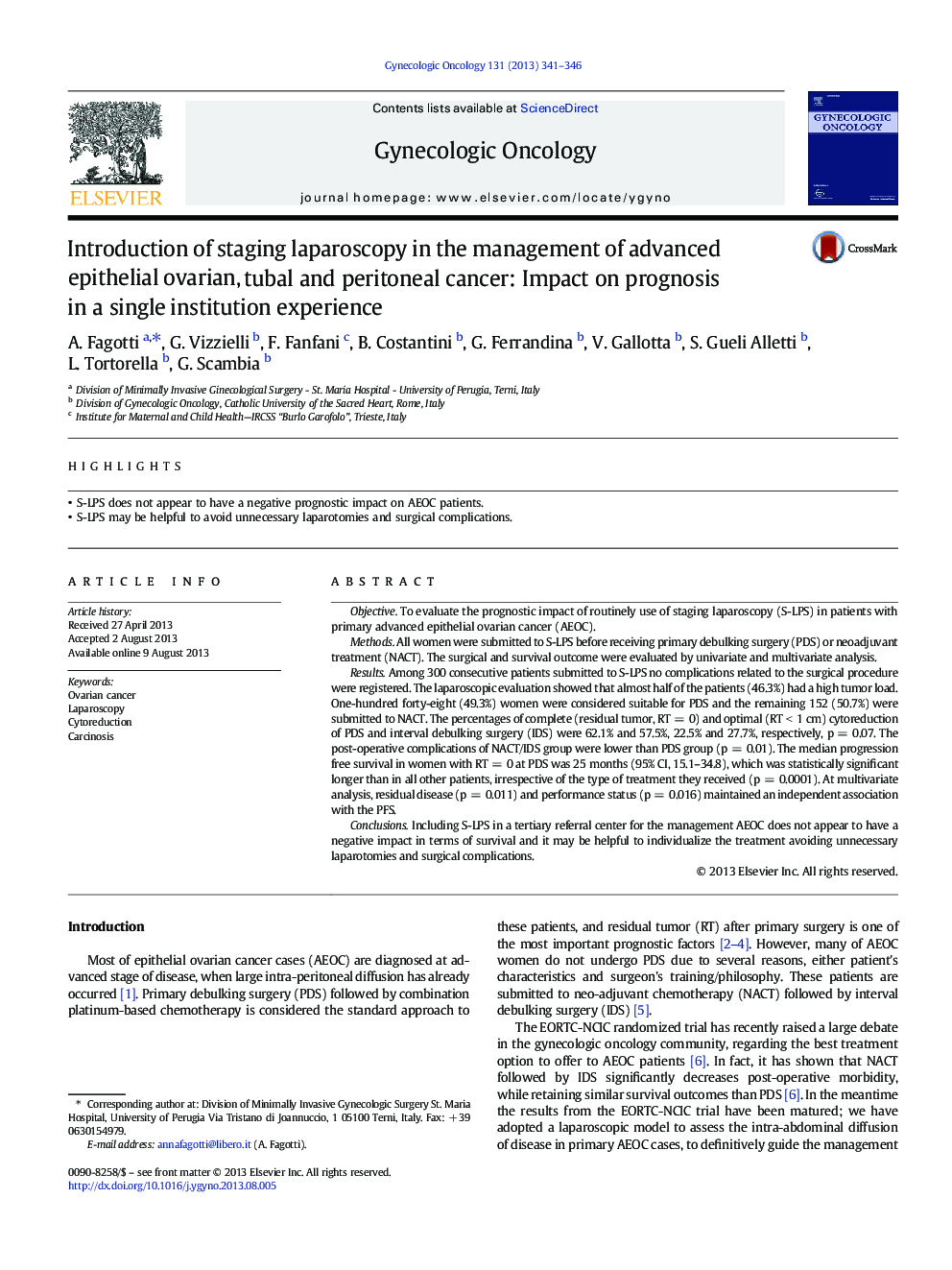| Article ID | Journal | Published Year | Pages | File Type |
|---|---|---|---|---|
| 6183645 | Gynecologic Oncology | 2013 | 6 Pages |
â¢S-LPS does not appear to have a negative prognostic impact on AEOC patients.â¢S-LPS may be helpful to avoid unnecessary laparotomies and surgical complications.
ObjectiveTo evaluate the prognostic impact of routinely use of staging laparoscopy (S-LPS) in patients with primary advanced epithelial ovarian cancer (AEOC).MethodsAll women were submitted to S-LPS before receiving primary debulking surgery (PDS) or neoadjuvant treatment (NACT). The surgical and survival outcome were evaluated by univariate and multivariate analysis.ResultsAmong 300 consecutive patients submitted to S-LPS no complications related to the surgical procedure were registered. The laparoscopic evaluation showed that almost half of the patients (46.3%) had a high tumor load. One-hundred forty-eight (49.3%) women were considered suitable for PDS and the remaining 152 (50.7%) were submitted to NACT. The percentages of complete (residual tumor, RT = 0) and optimal (RT < 1 cm) cytoreduction of PDS and interval debulking surgery (IDS) were 62.1% and 57.5%, 22.5% and 27.7%, respectively, p = 0.07. The post-operative complications of NACT/IDS group were lower than PDS group (p = 0.01). The median progression free survival in women with RT = 0 at PDS was 25 months (95% CI, 15.1-34.8), which was statistically significant longer than in all other patients, irrespective of the type of treatment they received (p = 0.0001). At multivariate analysis, residual disease (p = 0.011) and performance status (p = 0.016) maintained an independent association with the PFS.ConclusionsIncluding S-LPS in a tertiary referral center for the management AEOC does not appear to have a negative impact in terms of survival and it may be helpful to individualize the treatment avoiding unnecessary laparotomies and surgical complications.
